
Hydropower in Asia - Let the rivers run
By Erik Knive Hydropower Potential in Asia
Hydropower constitutes 21% of the world’s electricity generating capacity. The theoretical potential of worldwide hydropower is 2,800 GW, about four times greater than the amount that has been tapped. Yet, the actual amount of electricity that will ever be generated by hydropower will be much lower than the theoretical potential, due to environmental concerns and economic constraints.
Asia Pacific accounted for almost 32% of the world’s hydro generation, with 1,098 TWh, followed by the greater Europe with 25% (866 TWh), and Latin and North America with 695 TWh and 663 TWh respectively, according to the BP’s Statistical Review of World Energy 2011. China alone made up 21% of the world’s hydropower generation representing 721 TWh, almost double the hydropower generation in the European Union.
Southeast Asia, as of 2010, has about 29 GW of hydropower capacity installed, with 150 GW of technically feasible hydropower potential. Myanmar has the highest technically feasible hydropower potential of 40 GW in this region. India, China and Thailand have shown interest to develop hydropower projects in Myanmar for export.
Indonesia sees a lot of this potential located in islands far away from the high demand areas, and Malaysia similarly sees much of its hydropower potential concentrated in the Borneo Island, where demand is low.
The 700 km undersea cable to bring power from the 2,400 MW Bakun HEP in the eastern state of Sarawak to Peninsular Malaysia was eventually shelved in 2010. Bakun HEP’s first 300 MW unit is expected to be operational in August 2011, followed by the gradual phasing in of subsequent turbines at 3-month intervals and will now provide power to energy-intensive companies in the state.

Source: Various
Japan Nuclear Disaster
Following the Fukushima Daiichi crisis, Asia has taken a more conscious look at plans for nuclear power plants. As plans for new domestic reactors in Japan have been shelved, nuclear export plans are also being reconsidered, cautious that the disaster may have shaken international confidence in Japanese nuclear competence.
India however, is proceeding with their nuclear ambitions, which may be necessary to meet its power deficits given its sluggish performance in the last decades in adding new generation capacity. The inability to pay and the principal of load shedding as the primary solution does not help in India’s power situation.
Similarly, Vietnam, which is expecting double digit electricity demand growth in the next few years, is in dire need for new energy sources as domestic coal and gas supplies are being depleted quickly. Thus, the country is likely to turn to nuclear power to meet its burgeoning energy demand.
The nuclear disaster may see interest in large hydroelectric projects increase and this is further accentuated by high fossil fuel prices attaining highs not seen since 2008.
Cross Border Electricity Trade
A solution to meet unmet demand would be through trade. As in any commodity, electricity should be a tradable good. Natural as it seems, electricity trade is insignificantly low in Asia as most countries aim to be self sufficient in energy. Asia consumes over 7,000 TWh of electricity annually.
Electricity trading allows emerging economies to focus on their comparative advantage and prioritizes their limited resources on other infrastructure projects. It is ironic that Nepal, which has only developed 2% of its 42 GW of technically feasible hydropower capacity, now has to import electricity from India to meet its electricity shortage.
A more conscientious effort to utilize its hydropower potential would have enabled Nepal to earn much needed revenue from selling electricity to energy hungry India.

Source: Various reports, 2009 and 2010 figures
Electricity trading is slowly becoming more prevalent in East Asia. The Greater Mekong Sub-region (GMS) program is a program of economic cooperation between 5 Indochinese countries that aims to promote development through closer economic linkages.
Laos sees its role in the GMS program as the “battery of Asia,” with plans for 70 hydroelectric projects, of which only 12 are operational, including the 1,070 MW Nam Theun 2 which was commissioned in 2010.
Most of Laos current output is exported to Thailand. The 250 MW Xekaman 2 hydropower project in Laos is the first hydropower project commissioned in 2011 for export to Vietnam. However plans for a larger 1,285 MW Xayaburi HPP, is seen as a threat to the environment and livelihood of people living downstream from it.
In 2009, Cambodia started importing electricity through a 230 kV high-voltage transmission system constructed under the GMS Power Transmission project with funding from ADB, the International Development Association (IDA) of the World Bank, the Nordic Development Fund and the Cambodian Government.
Should energy trading continue to increase, interdependence and trust can be established over time between the partners, encouraging further mutually beneficial co-operation and the development of clean, sustainable power.
Infrastructure Development
Developing a hydropower project, as with developing any other infrastructure projects are highly capital intensive during construction. Emerging economics, which are already struggling with current account imbalances, will be faced with the high development cost, high civil-works costs, geological risks and the long gestation period in the construction of a hydropower project.
Countries in Asia have seen tremendous success by opening up their power sector to the private sector. Malaysia’s Independent Power Producers (IPP) program in the 90s, was so successful, new capacity grossly overshot demand growth by 50% surplus capacity.
Private investors are better equipped to assess and manage risks associated with the development of hydropower project. The mobilization of private capital into the power generation sector will free up scarce resources for the government to focus on other important infrastructure development, necessary for the country’s growth.
Competitive Power Markets
The Vietnamese Government has underlined the need for a more efficient, competitive power market. Plans are made for a three-phase roadmap beginning with a competitive generation market slated to be operational by 2012, three years ahead of schedule.
Competitive power markets are a good way to move from the traditional subsidies to a market-based based pricing system where consumers pay the real cost of generation.
In an efficient market, prices serve as a strong signal to achieve the alignment of electricity supply and demand. The need for cheaper sources of energy unaffected by the volatile movement of fossil-fuel prices and the commitment to reduce carbon emissions will encourage the development of hydropower projects.
Multitude of Benefits
Hydropower facilities have the ability to start generation without an outside source of power, or black start capability. This service allows system operators to provide auxiliary power to more complex generation sources that could take hours or even days to start.
Hydropower projects offer much more than power generation. No other method of generating electricity also create opportunities for providing water for human consumption, irrigation and flood control, all while generating clean and inexpensive electricity. Additionally, impoundment hydropower creates reservoirs that offer a variety of recreational opportunities.
Clean and Sustainable Power
Hydropower offers advantages over other energy sources but faces unique environmental challenges. Hydropower does not pollute the air like power plants that burn fossil fuels, such as coal or natural gas.
China Gezhouba Group Corp, the parent of the Three Gorges Dam builder, plans to invest $1 billion to build a hydroelectric power plant in Indonesia's South Sulawesi province. Indonesia intends to cut its carbon emissions by 26% by 2020, and has accelerated the pace of its efforts to develop clean energy.
Hydroelectric power not only helps to alleviate Indonesia’s energy shortage but also enables the country to meet its carbon emissions reduction target.
The longevity of the benefits of hydropower plants lies in the usually long-lasting nature of dams and the ability to extend the operational life of power stations through refurbishment and upgrade. Hydropower plants can last for 50 years or more without major new investments.
It is not uncommon that refurbishment and upgrade after 30-40 years will extend the operational life of a hydropower plant to more than 80 years. Increasing the generating life of an existing plant is generally preferable and more cost effective than the construction of a new plant.
SN Power recently rehabilitated its 55 years old Ambuklao hydropower plant, which was shut down in 1999 due to siltation problems following the July 1990 earthquake. Ambuklao is one of the oldest hydropower plants in the Philippines with a capacity of 75 MW. After its rehabilitation, the plant capacity is increased to 105 MW (3 x 35 MW turbines) with an expected average annual production of about 332 GWh.
With global warming already wreaking its nasty effects on nature, it is imperative to loosen the dependence on fossil-fuels to reduce greenhouse gas emissions. Hydropower is fueled by water, and thus relies on the water cycle, which is driven by the sun, making it a clean, renewable and sustainable power source.
Conclusion
The recent Nuclear accident in Japan and increasing global warming as well as changing weather patterns, underscore the importance of having a good energy mix. Utilization of the untapped hydropower potential in Asia is important to make the energy mix sustainable.
Countries in the region need to look to the European model of integrated markets as an important part of the energy mix, this both to ensure economically viable exploitation of resources, as well as to secure redundancy of supply and balance energy supply during the economic cycles.
Increased energy interdependence improves the relationships between countries and decreases risk, again improving investment climates. The sustainable and responsible development of hydropower can be a catalyst for economic development and can help bring millions of people out of poverty in many of the less developed countries in Asia.


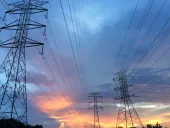
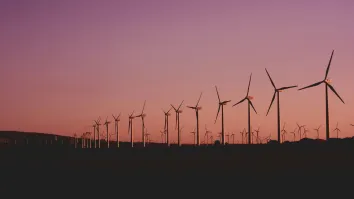
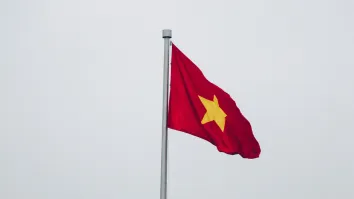
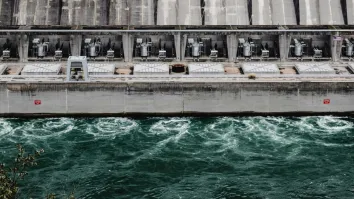
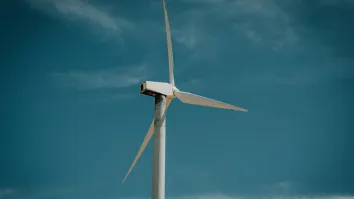













 Advertise
Advertise







